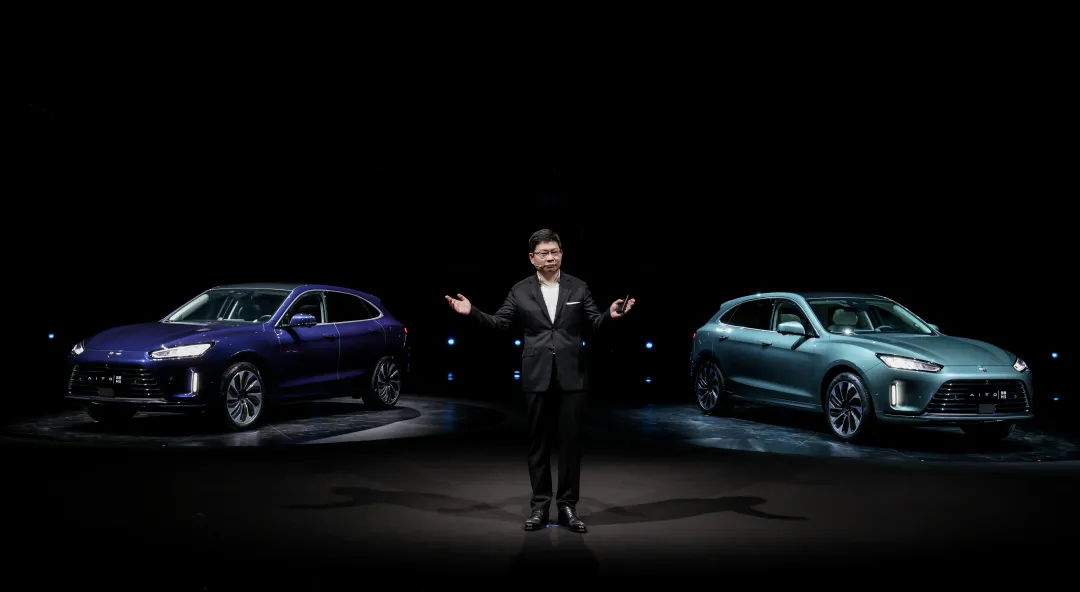Author: Zhang Lianyi
“Life is up, life is down, so thanks for being there.
Life is fun, amazing, and inspiring. Life is a beautiful journey.”
After the press conference, Yu Chengdong slowly exited the stage, following four consecutive “thank you”s, while this song was being played on stage.
It was the first time a technology company officially launched a new car at a product launch.
On December 23, at the Huawei Winter Flagship Product Launch, Yu Chengdong, CEO of Huawei Consumer Business Group and CEO of Huawei Intelligent Automotive Solutions BU, appeared twice on stage. In the first appearance, he spent about 30 minutes introducing Huawei’s full-scenario intelligent lifestyle strategy and brought the HUAWEI P50 Pocket flagship folding screen phone. In the second appearance, which took over 60 minutes, he fully introduced AITO’s first model, the Wanjie M5 under the AITO brand, which was recently released by Jin Kansiles.
AITO is a high-end smart car brand released by Jin Kansiles not long ago. On site, Yu Chengdong stated that AITO and AUTO only differ by one letter, and the meaning of “I” in AITO stands for intelligence. Huawei hopes to bring intelligence to every car.
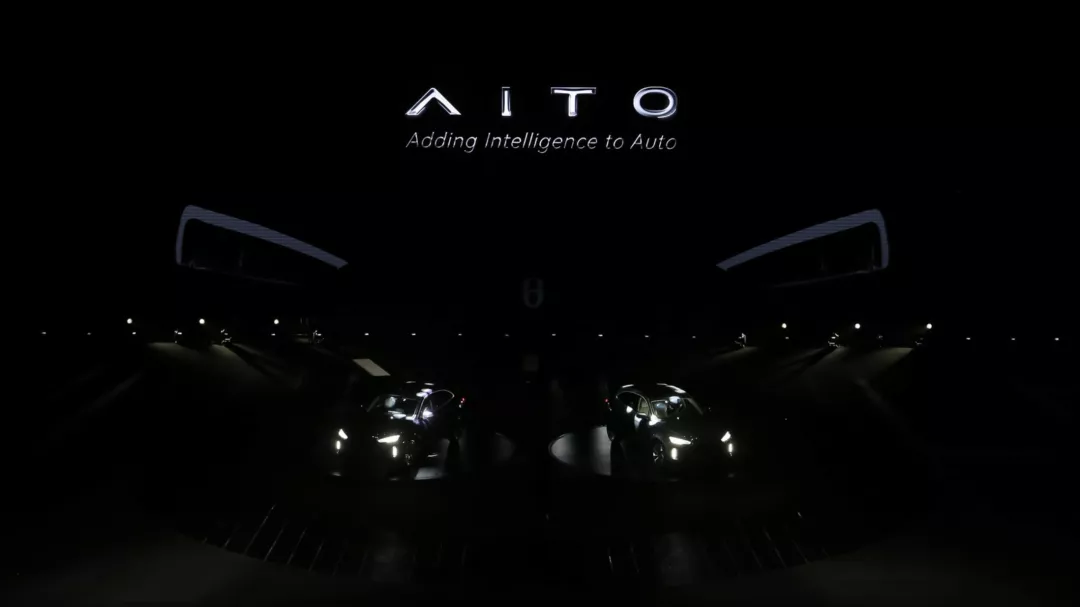
Huawei has had a longstanding relationship with Xiaokang. On the first day of the Shanghai Auto Show this spring, Siles officially released the Huawei Xuan SF5 model, which features the HUAWEI DriveONE three-in-one electric drive system, HUAWEI HiCar human-vehicle-home intelligent interconnection system, and HUAWEI Sound high-quality music experience. It has entered Huawei’s stores and flagship stores for sales under the Huawei Xuan brand.
But clearly, Huawei is not satisfied with this and wants more say.
“The whole car of the Huawei Xuan SF5 was not designed by us, and I think we can do better.” Hence, AITO was born. Yu Chengdong said that the Wanjie M5 was designed and built with the participation of Huawei’s consumer business and will be sold through Huawei’s retail channels. It’s no wonder that Huawei even used the phrase “the first Hongmeng car officially launched” in its propaganda.
 From December 23rd, the Wanjie M5 will be displayed in 180 Huawei stores across 42 cities. Starting from January 20th, 2022, the car will be available for online reservations and test drives in 500 Huawei stores across 118 cities. The new car will begin delivery at the end of February next year.
From December 23rd, the Wanjie M5 will be displayed in 180 Huawei stores across 42 cities. Starting from January 20th, 2022, the car will be available for online reservations and test drives in 500 Huawei stores across 118 cities. The new car will begin delivery at the end of February next year.
As Huawei’s first car, the Wanjie M5 is produced by Seres, but Huawei is fully involved in all aspects except for production. Huawei has been recruiting talents for car manufacturing, mainly focusing on intelligent driving, cabin, and drive systems. Recently, according to Huafu Securities, Huawei has begun recruiting body testing personnel, getting one step closer to car manufacturing.
Despite this, Yu Chengdong repeatedly emphasized during the launch event that “Huawei does not make cars”. He hopes to help car companies create products that are leading the times. “This will also help Huawei’s car components to achieve scale sales and further prove Huawei’s strong technology and experience advantages.”
We analyzed that the goal of Wanjie M5 is to show off ambitions and prove that Huawei has the ability to create an intelligent electric car. Huawei is not incapable of building cars, but rather unwilling to do so.
Simplified Appearance and Redesigned Chassis
With deeper involvement from Huawei, the Wanjie M5 has distinct differences from the Seres SF5. Yu Chengdong stated that he and his team always strive for the ultimate in simplicity, purity, and minimalism to achieve a high-end, stylish, and youthful look.
In terms of appearance, with the participation of Huawei’s phone design team, the Wanjie M5 is much simpler compared to the Seres SF5. However, there are still some similarities with the SF5, possibly due to time constraints. There may be further breakthroughs in future AITO products.
As for the power system, the Wanjie M5 is powered by Huawei’s DriveONE pure electric drive range extender platform. The intelligent range extender control system can autonomously coordinate special boosters, drive technologies, battery packs, intelligent controls, and 860+ scenarios to achieve precise matching and provide a strong, low-energy, and low-noise driving experience. The system also supports OTA upgrades.
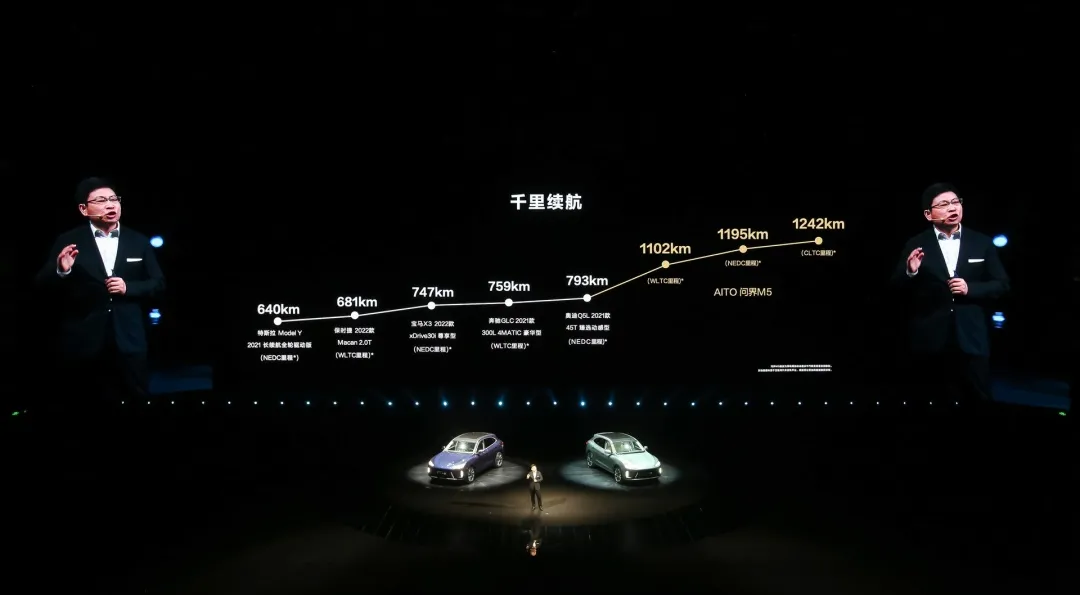
Data shows that the Wanjie M5’s range extender system uses a 1.5T four-cylinder booster 3.0 with a maximum compression ratio of 15:1, 41% ultra-high thermal efficiency, and a maximum power generation efficiency of 3.2 kW・h/L, which is superior to the Seres SF5.The WENJIE M5 offers users a choice between rear-wheel and four-wheel drive, with the four-wheel drive performance version offering a comprehensive peak power of 315kW and the four-wheel drive flagship version offering a comprehensive peak power of 365kW. Its 0-100km/h acceleration time can reach 4.4 seconds. While the peak power of the WENJIE M5 four-wheel drive flagship version is lower than that of the SF5 from BYD, its acceleration over the first hundred kilometers is faster than that of the latter.
Moreover, the HUAWEI SOUND audio system has also undergone further upgrades, including 19 high-end audio units, center-installed directional tweeter design, independent low-frequency audio system, driver headrest audio system, 7.1 channel immersive sound effects, and active three-way frequency technology.
It’s worth mentioning that Huawei believes that the SF5’s chassis tuning is too soft, so they have recalibrated the WENJIE M5’s chassis to further enhance the vehicle’s handling performance.
During the presentation of the chassis, Richard Yu repeatedly used the phrase “luxury car level.” He stated that the WENJIE M5 features an all-aluminum alloy chassis commonly found in million-dollar luxury cars and uses a front double wishbone and rear multi-link independent suspension system, which is the same design as that of the Porsche Macan, enabling the car to maintain better stability in different driving situations.
In terms of price, the WENJIE M5 is slightly higher than the SF5. After comprehensive subsidies, the pre-sale price of the WENJIE M5 rear-wheel drive standard version is 250,000 yuan, the four-wheel drive performance version is 280,000 yuan, and the four-wheel drive flagship version is 320,000 yuan.
The most significant change is in the intelligent driving end. The WENJIE M5 multimedia system is equipped with a 10.4-inch curved full LCD instrument panel and a 15.6-inch semi-suspended central control large screen, making it the first vehicle model to feature the latest HarmonyOS intelligent cockpit.
Richard Yu stated that the latest HarmonyOS intelligent cockpit has five major highlights, which is likely the biggest selling point of the WENJIE M5. Firstly, it offers easier interaction operation. It adopts a zero-level design desktop with a user interface and interaction methods familiar to Huawei terminal users. It utilizes a large visual interactive area and customized UI design to allow for most settings and information to be accessed in a single step. Secondly is personalized Smart Dock, which is a personalized shortcut bar under the desktop that can be adjusted according to personal preferences and actively recommends content, safety reminders, etc., based on road conditions, owner status, and vehicle condition. Thirdly is the industry’s first intelligent multi-window system that builds rich window display modes, such as full screen, split screen, and floating windows.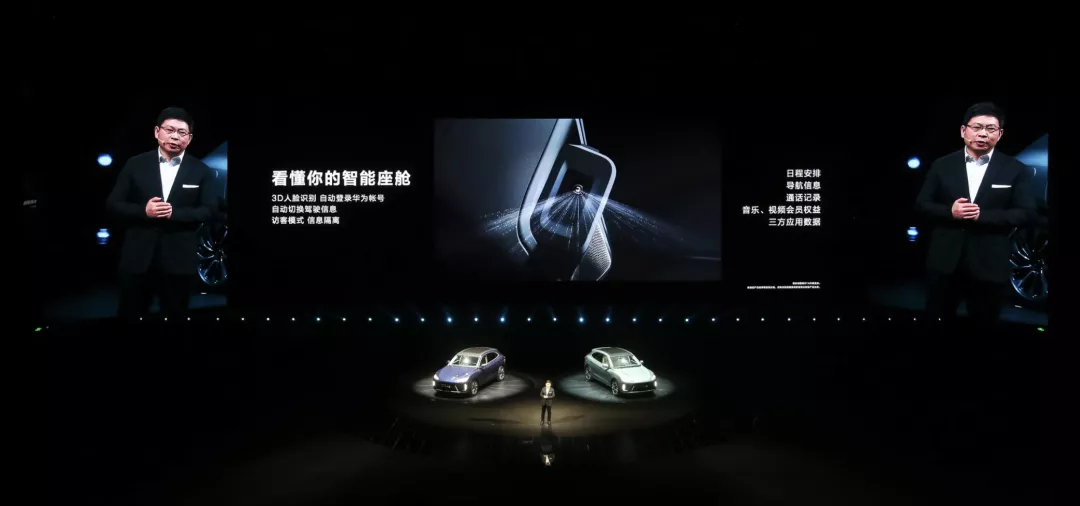
Second, a more comfortable interactive experience. With a smart background control and memory allocation VIP scheduling scheme, HarmonyOS Intelligent Cockpit provides a smooth car-machine experience, with smooth operation and interface switching, and keeps the car-machine running smoothly for a long time. The setting interface is designed with careful attention to detail, including 3D animation effects for interface switching, light and shadow effects for driving mode switching, micro animation effects for icon interactions, and interactive ambient lighting effects that respond to sound, making the vehicle status clear at a glance.
Third, easier access to resources. With a rich application ecosystem, the AITO AITO M5 comes pre-installed with a variety of applications, including in-car maps, Huawei Music, Huawei Video, Kugou, Ximalaya, Pocket Story, Youku, and Leishi; the Huawei app market, which is specially designed for smart in-car scenarios, already has a rich collection of apps and convenient services. In the open Hongmeng ecosystem, more applications will continue to be added in the future.
Fourth, a smarter functional experience. With intelligent voice interaction, voice car control adopts Huawei’s self-developed leading end-to-cloud collaboration architecture for the first time; after awakening Xiaoyi, up to 60 seconds of continuous conversation can be conducted, without fear of interruptions or invalid commands, and can even accomplish two tasks with a single command; it supports full-interactive voice control, everything can be done by speaking; it has four sound zones for intelligent recognition, accurately recognizing commands from the driver’s seat, passenger’s seat, and back seat. In the future, Xiaoyi will also support Cantonese and Sichuan dialects one after another. With smart camera features, AITO AITO M5 is equipped with 8 million high-definition cameras inside and outside the car, which can quickly transmit images taken on the road to the user’s mobile phone.
Fifth, convenient cross-device connection and control capabilities. All-scenario smooth connectivity: after logging in to the same Huawei account on the phone and car machine, with the support of the distributed technology of HarmonyOS, navigation, music, video, and smooth connectivity services can be seamlessly transferred between the phone and car machine, and real-time sharing of scenery is also supported; with just one Huawei account, users can use the control center pre-installed on the AITO M5 car machine to set up scenarios such as “Warm Homecoming” and “Peaceful Departure” to control smart home devices; users can use HUAWEI WATCH 3 to unlock the vehicle via Bluetooth or NFC.
As for intelligent driving, AITO M5 has L2+ level assisted driving functions, integrating 1 visual perception camera, 3 millimeter wave radars, 4 APA cameras, and 12 long-range ultrasound radars.
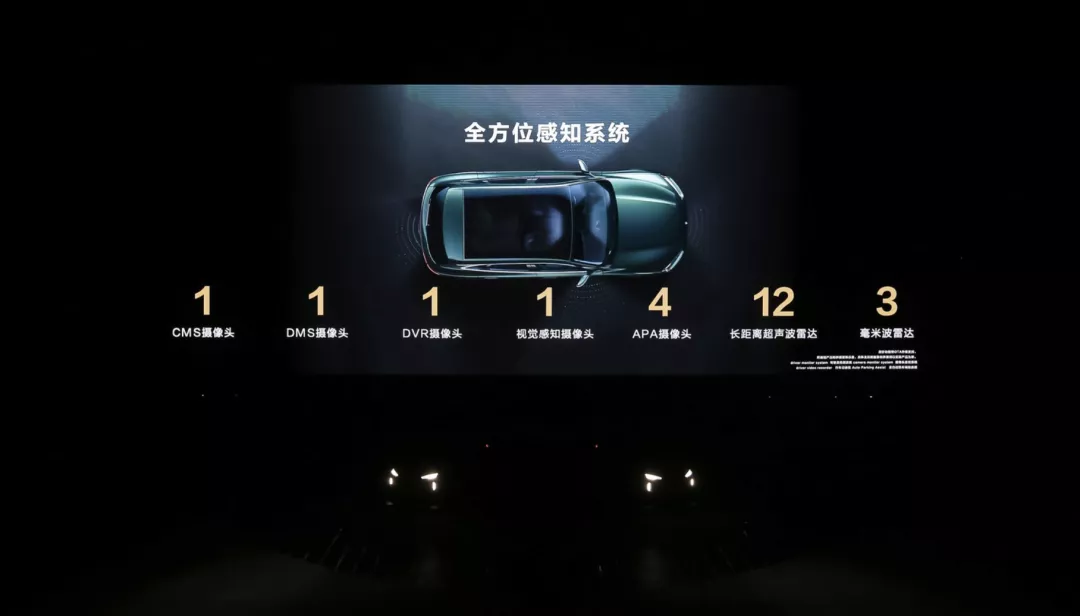 The third generation assisted driving camera of Bosch has a maximum detection angle of 100 degrees and a highest pixel of 2.6 million. The fifth generation millimeter wave radar system of Bosch has a longest detection distance of 210m and a maximum detection angle of 120 degrees, which can achieve functions like lane cruise assist and driving blind area warning.
The third generation assisted driving camera of Bosch has a maximum detection angle of 100 degrees and a highest pixel of 2.6 million. The fifth generation millimeter wave radar system of Bosch has a longest detection distance of 210m and a maximum detection angle of 120 degrees, which can achieve functions like lane cruise assist and driving blind area warning.
The 360-degree intelligent panoramic parking system is composed of 12 ultrasonic radars, 4 APA high-definition cameras, and APA controllers. It recognizes parking spaces and obstacles through the fusion of vision and ultrasonic waves and supports more than 100 parking scenarios, including special cases like incomplete parking lines and curved parking spaces. It can also identify parking restrictors.
Huawei aims to make the MatePad 5G a smart terminal that can connect to people, smartphones, homes, and other things, truly achieving the integration of car and all things. “A smart terminal with wheels” is how Yu Chengdong introduced it when it entered the market.
Building a smart life is more important than building cars.
Although Huawei has repeatedly stated that it will not build cars, whenever there is new action in the car circle, the rumor of “Huawei builds cars” immediately arises.
Previously, when we communicated with the winner of the “Blue Blood Top Ten” award from Huawei, Hu Sai Xiong, he said that Huawei building cars is definitely not a problem. It’s a strategic issue. The Huawei team has always emphasized “unite all the strengths that can be united.” By engaging in upstream activities, it can unite all automakers, at least not go into opposition with them.
In Hu Sai Xiong’s understanding, Huawei’s cooperation with Xiaokang is more about demonstrating its “car building” capabilities to the outside world. “When working with relatively weaker partners, if the performance is good, it is a display of strength.” He believes that Huawei is more advanced than general suppliers, breaking through boundaries, helping customers succeed, and not just supplying goods to enterprises, but drawing boundaries with customers and jointly developing and innovating with them. This is the successful experience that Huawei has summarized in the traditional operator field and applied in the automotive field.
In fact, since Huawei entered the Jinkang Sailis system, the latter’s sales have indeed increased to some extent but not outstandingly. From the data perspective, since April, Jinkang Sailis’ sales have gradually climbed from two digits to three digits, even four digits, but compared to other new car manufacturers, the speed is still slightly slow. Obviously, Huawei hopes that cooperation can bring greater benefits.
By getting further into the Jinkang Sailis system, Huawei is helping the latter find a way out while accumulating more experience in car building for itself.
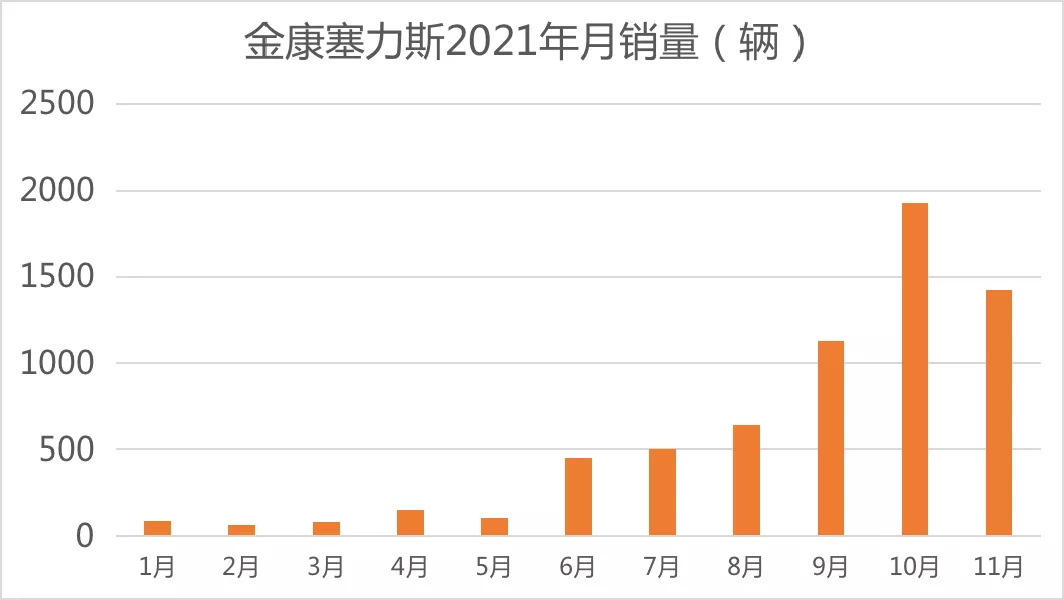
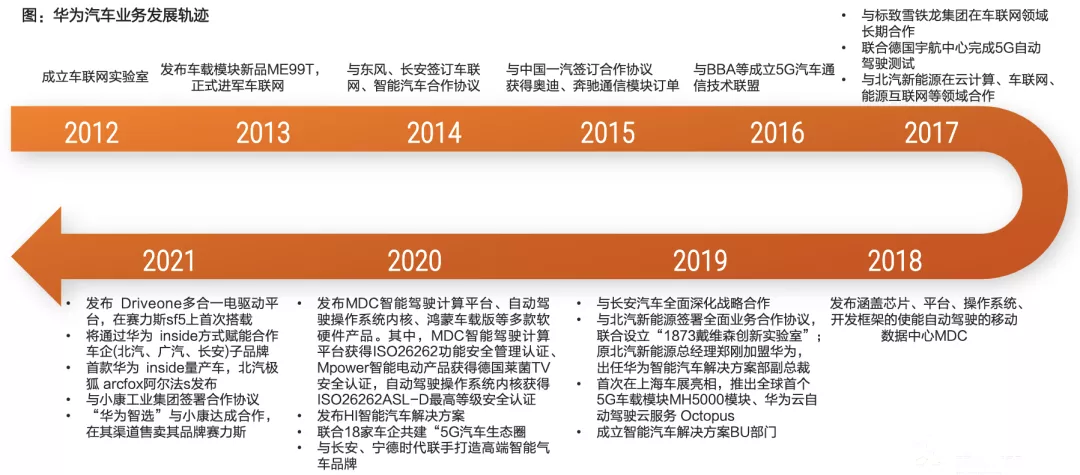 As Yu Chengdong said, “In the era of intelligent, connected, and electrified cars, Huawei has made every core component that cars need.” Therefore, whether Huawei is making cars now itself seems unimportant. What’s important is whether it can occupy the central position in the future “people-car-life” ecosystem.
As Yu Chengdong said, “In the era of intelligent, connected, and electrified cars, Huawei has made every core component that cars need.” Therefore, whether Huawei is making cars now itself seems unimportant. What’s important is whether it can occupy the central position in the future “people-car-life” ecosystem.
When Yu Chengdong introduced the Huawei Wanjie M5, he described it as “an intelligent terminal with wheels” and called it an important solution for intelligent travel scenarios.
Huawei’s long-term strategy for consumer business in the next decade is to build a full-scenario smart life strategy, that is, to create a seamless smart life experience around the full life scenarios of consumers’ clothing, food, housing and travel, with a focus on five major scenarios of sports and health, smart office, intelligent travel, audio-visual entertainment, and smart home.
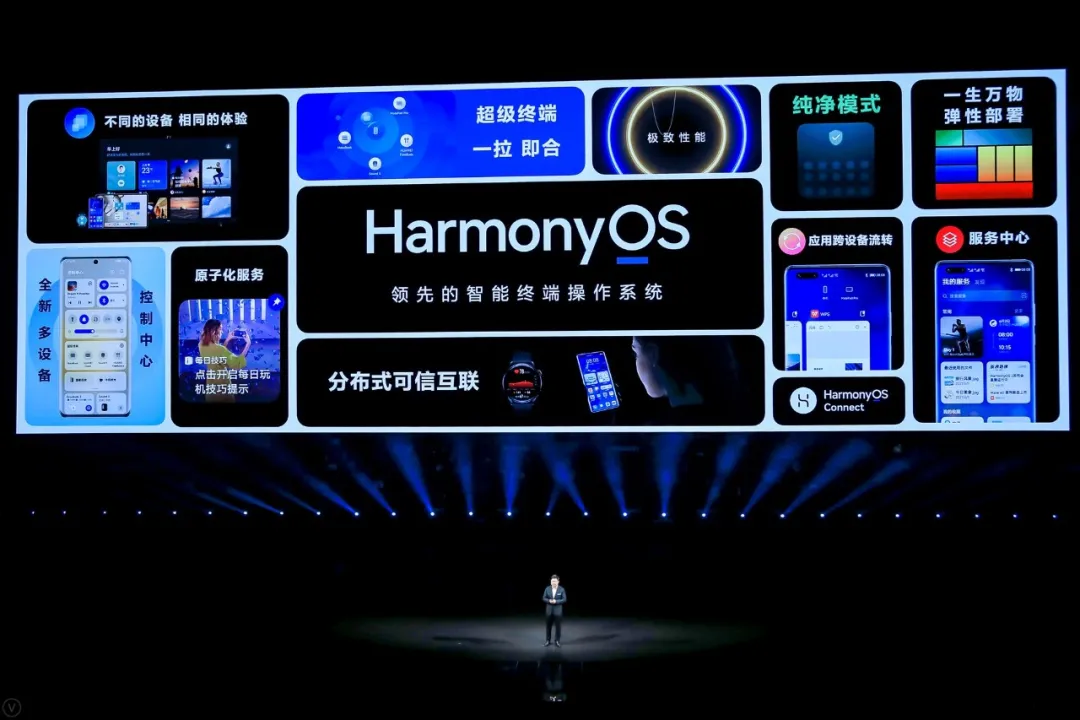
To truly build a “smart life,” all of the above scenario layouts are indispensable. In a future where smartphones, tablets, computers, cars, and homes are increasingly interconnected, users are more likely to prefer more products using the same ecosystem.
This means that if Huawei can secure more partnerships with car manufacturers and get the “Hongmeng ecosystem” into more car models, not making cars may be a long-term plan. And once the smart life strategy is disrupted due to “not making cars,” Huawei’s next move could be making cars in minutes, since it is already prepared at all times.
“We have experienced the longest winter through three years of continuous and multiple rounds of sanctions. No winter can last for three years,” Yu Chengdong used emotional language to conclude the press conference. He said, “Despite such difficult circumstances, we have received support from global consumers, our global partners, and the hard work of all our employees, enabling us to survive the toughest times. Winter has come, and spring is not far away. Crossing the winter, the spring blossoms.”
Now that Hongmeng Automobile has been launched, can it lead Huawei out of the winter?
This article is a translation by ChatGPT of a Chinese report from 42HOW. If you have any questions about it, please email bd@42how.com.
